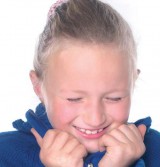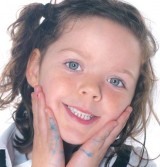Explore the individuality of your pupils with Molly Potter’s suggestions for expanding PSHE across the curriculum...
Most of us like to be asked questions and given the opportunity to share information about ourselves – when another person takes an interest in us, it can make us feel great! This is just as true, of course, for children.
Exploring your pupils’ individuality need not be confined solely to the start of a new academic year – as part of the process of getting to know your new class. Celebrating the fact that we are all different – at any time – can:
 • help develop children’s sense of personal identity
• help develop children’s sense of personal identity
• boost self-esteem and raise self-awareness
• help children to be excited and interested by personal differences (rather than wary or fearful)
• help pupils consider, and challenge, their own and others’ viewpoints, and learn to disagree respectfully
• help prevent pupils from doing something just ‘because everyone else is’ – enthusing about individual differences can give the message that it would be a very dull world if we all liked the same things, made the same choices, thought the same thoughts and held the same opinions!
The following tried and tested activities give pupils an opportunity to share something about themselves. They can obviously sit within the PSHE area of the curriculum; however, many can be expanded into other areas – most obviously literacy but also numeracy, humanities and ICT.
 Give pupils some entertaining questions with multiple choice answers. For example,
Give pupils some entertaining questions with multiple choice answers. For example,
• Which of the following lessons would you most like to have next?
Maths; Technology; Art; Literacy; Music; PE.
• Which of the following would you most like to do?
Fly in a helicopter; Swim with dolphins; Go white-water rafting; Do a bungee jump.
• Which of the following super powers would you most like? The ability to:
Fly; Become invisible; Grant other people wishes; Time travel.
Ask pupils to secretly indicate on paper their single preference to each question, and then ask them to pair up with someone and spend time seeing if they can guess each other’s answers. Pupils can move on to several different partners and start over. With younger children, pictures can be used to give the choices. Alternatively, you can ask the whole class to guess different individuals’ choices.
 Give pupils 100 units of pretend currency. They will need a piece of scrap paper to keep track of their own banking. You might like to give the currency a name, e.g. Perso. Tell pupils that they have a ‘blank canvas friend’ who currently has no personality. Have a selection of qualities written on separate cards and put them up for auction one at a time. Check for understanding and then ask pupils to bid against each other for each quality to give to their blank friend. This activity highlights how we all value different qualities in others. It’s a good idea to get pupils to make a note of any qualities they bid for because even if they’re unsuccessful in the bidding, it illustrates the qualities they value. Because they don’t know what might come up next (which keeps it interesting), pupils sometimes need encouragement to start bidding.
Give pupils 100 units of pretend currency. They will need a piece of scrap paper to keep track of their own banking. You might like to give the currency a name, e.g. Perso. Tell pupils that they have a ‘blank canvas friend’ who currently has no personality. Have a selection of qualities written on separate cards and put them up for auction one at a time. Check for understanding and then ask pupils to bid against each other for each quality to give to their blank friend. This activity highlights how we all value different qualities in others. It’s a good idea to get pupils to make a note of any qualities they bid for because even if they’re unsuccessful in the bidding, it illustrates the qualities they value. Because they don’t know what might come up next (which keeps it interesting), pupils sometimes need encouragement to start bidding.
Example qualities:
trendy, optimistic, chatty, generous,
imaginative, helps you with your work, listens
to you, organised, sporty, funny, etc.

Pupils write and illustrate a manual with instructions for keeping themselves happy and working hard at school including their needs, likes and dislikes. This manual can include,
• My perfect lesson – what helps me learn
• Barriers to and distractions from learning
• Subjects I dislike and what might need to happen for me to start liking them
• My ideal break and lunchtime
• Other things I need to keep me happy at school
 This activity is good for the start of the academic year and results in a magazine that the pupils will spend the rest of the year reading. Issue each pupil with a sheet of A3 paper and the instruction that they will fill up both sides of this sheet with information about themselves so that there is barely any white paper left! Ask pupils to start with a cartoon drawing of themselves with their name in decorated bubble writing across the page. Then discuss and share ideas about the kind of information they can put upon their pages and how it could be presented. For example,
This activity is good for the start of the academic year and results in a magazine that the pupils will spend the rest of the year reading. Issue each pupil with a sheet of A3 paper and the instruction that they will fill up both sides of this sheet with information about themselves so that there is barely any white paper left! Ask pupils to start with a cartoon drawing of themselves with their name in decorated bubble writing across the page. Then discuss and share ideas about the kind of information they can put upon their pages and how it could be presented. For example,
• Compliments they have been given – written in speech bubbles
• Flow charts that show their morning routine
• A timeline of life events so far
• A picture of five things they could not be without
• A list of adjectives and a mark out of 10 for how much that adjective describes them, e.g. hardworking 9/10, tidy 8/10, clumsy 0/10
• A plan (possibly drawn using a computer paint programme and stuck onto the page) of their bedroom/house/garden/route to school with special features labelled
• A picture of their favourite outfit
• Descriptions of the people they live with or complete given sentence starts about them, e.g. the best thing about X is…
• A list of things they think they’re good at and things they would like to be good at
• Lists of favourites and least favourites
• An article about any hobbies, special interests or strong opinions held
• Illustrations of specific memories, e.g. first day at school, an exciting memory, a day that made me proud, etc.
• A factfile, including name, height, birth date, star sign, left-/right-handed, eye colour, etc.
Once all pupils’ pages are complete, bind them to make a class magazine.
Ask pupils to create a life timeline that goes from age zero to 100. Ask pupils to place some of the following actions onto the timeline at the age at which they perceive each action would be ideal for their own life or leave the action off if they don’t think they will do it at all:
 • Start to have children
• Start to have children
• Learn to drive
• Be fit and healthy until
• Leave school
• Move away from home
• Have grandchildren
• Find a partner that they’ll spend the rest of their life with
• Get your first full-time job
• Die (only use this if you feel skilled enough to handle this sensitively)
Pupils can then compare and discuss each other’s timelines, take part in a whole class discussion about the pros and cons of doing different activities at different ages, illustrate their timelines with pictures of themselves portrayed in the future, collect data from the whole class to represent in graph form, write a letter to themselves in the future, etc.
Becoming a teaching school
Ace-Heads
